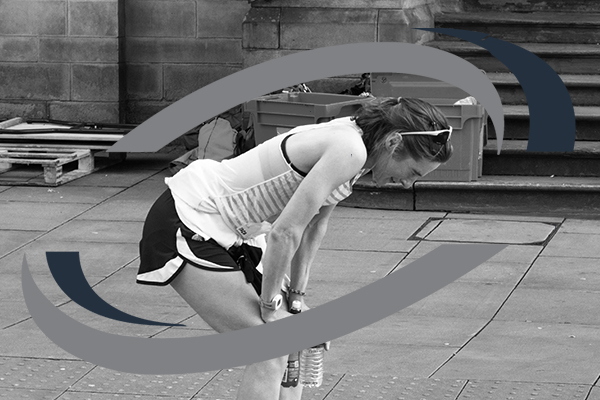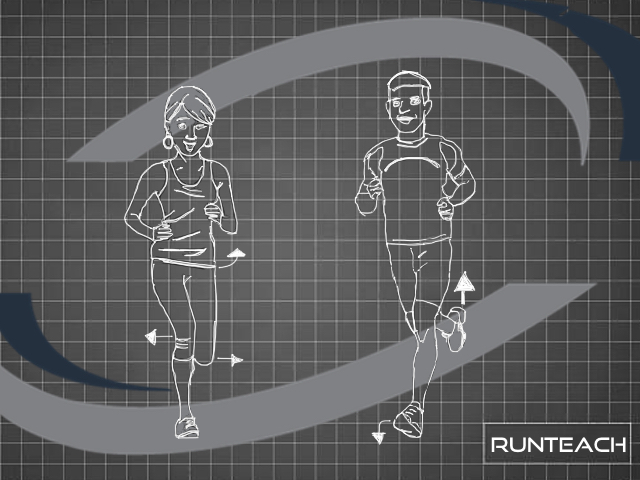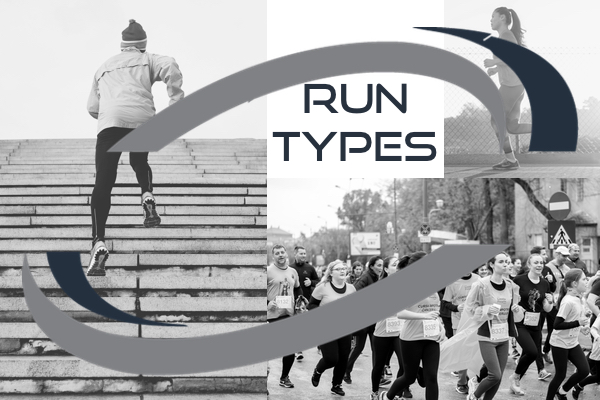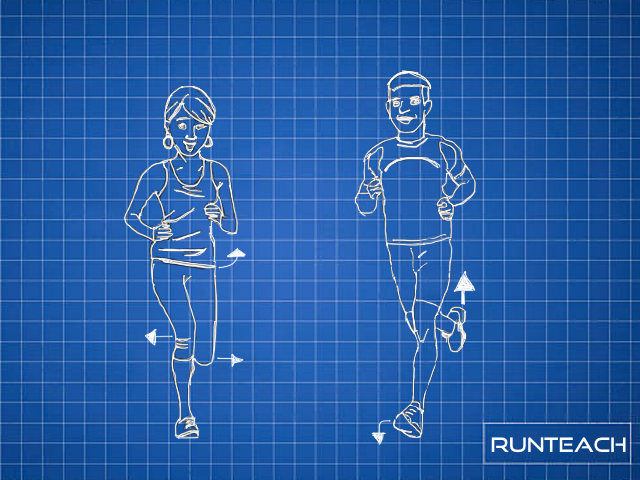Why do I find it hard to breathe when running?
With the glorious weather we have been having in the UK over the past few months, many of us have been experiencing breathing issues when we are running. Looking at breathing through a wider lens, I often see questions being asked about breathing patterns for running and if there is a correct way to breathe to be more efficient and perform better.
Please remember that none of this information is intended to be medical advice. You should always seek professional medical advice and/or attention from a qualified medical professional if you suffer from breathing difficulties.
Separation
First off, I want to separate out breathing related to weather and breathing directly related to activity. Breathing related to weather can affect us even if we are not running or otherwise being active, however any issues we experience can be amplified with activity intensity and duration.
Breathing problems also tend to be worse if we already have a respiratory condition such as asthma or COPD (chronic obstructive pulmonary disease). According to the NHS, some 900,000 people in the UK suffer from COPD.
I deal specifically with weather and breathing in a separate post that you can find here.
Breathing and running
What does breathing do for us when we run?
This may at first seem like an odd question as we all know that we need to breathe to stay alive. But if we look specifically at running, what is happening that makes it so important to sort our breathing out?

Well, when we breathe we take in oxygen. This oxygen is taken by our blood to the working muscles. The majority of the energy that our muscles need when we run is generated using an aerobic process. This aerobic process requires fuel (such as glucose/carbohydrate) and oxygen. Without oxygen, the energy for our muscles cannot be made for more than a few minutes. So from this one point alone, breathing is pretty important!
Don’t We All Breathe When We Run?
I hope So! But there are efficient ways to breathe and inefficient ways to breathe. In fact, there is quite a lot of different opinion on how we should breathe to get the most out of our running. For example, let’s take patterns of breathing…
Breathing Patterns
Some of the popular breathing patterns are:
2-2, 3-3, 4-4
These are even patterns, where we breath in for the required number of strides, and breath out for the same number of strides. For example, the 2-2 pattern dictates that we breathe in for two strides and then out for two strides.
Some coaches and sports scientists argue that a breathing pattern based around an even number of strides for an in-breath and an ou-breath is the most efficient. They state that it fits most neatly with the running rhythm and our arm swing. It may also be easier to adopt than a pattern based around an odd number of strides.
3-2, 2-3
The argument against the even patterns is that we are always taking the in-breath when the same foot is starting it’s stride. It is argued that this puts more emphasis on the same leg with each breath and therefore could lead to us landing ever so slightly heavier on it as we start our count. However, there is not actually any research or evidence to back this up, and at the time of writing this post it is pure conjecture by those who promote an uneven breathing pattern.
That said, uneven breathing patterns seem to be just as effective as even ones and there is no reason to avoid them.
You may have noticed both 3-2 and 2-3. This indicates more of an emphasis on the in-breath (3-2) or more of an emphasis on the out-breath (2-3): clearly this depends whether you start on an in-breath or an out-breath! But, the point is, with an uneven breathing pattern there is more of an emphasis either in or out, and this is another point of disagreement as to which is better.
Given that the air pressure in our lungs is lower than the outside air pressure when we breathe out, it makes logical sense to emphasise the out-breath. This lowers the inside air pressure further, and creates more room for a higher volume of air in our in-breath. As air moves from areas of high pressure to low pressure, this could make taking in more air easier.
Add to this the fact that we can only emphasise the in-breath for so long (due to finite lung capacity) before we have to take a reset breath and start again, and the logic of emphasising the out-breath makes even more sense.
The Best Breathing Pattern
Ultimately, the best breathing pattern is the one that works for YOU. So, it is definitely worth giving them all a go to see which one you find the most efficient. You may find that you use different patterns depending on the pace and intensity of your running.
Agreement
While there is certainly disagreement on the best breathing pattern to use, there seems to be universal agreement on the style of breathing. Everyone agrees that deep belly (or diaphragmatic) breathing is far superior to chest breathing.
Chest Breathing
Chest breathing, where we breath from our upper chest or even our mid-chest, is too shallow to provide us with the oxygen we need for running. We need to be inhaling a larger volume of air so the we not only take in more oxygen, but are better able to control the rate of our breathing – especially as the intensity of our exercise increases.
Chest breathing is also thought to contribute to us getting a stitch while running, and can lead to very rapid breathing as we fight to get in enough oxygen. This is turn will slow our running down and can leave us short of breath and feeling like we just aren’t very fit. But, change how you breath, and you could well change that perception.
Deep Belly Breathing
Deep belly breathing works by using the diaphragm more fully to regulate our breathing. We are able to inhale a far larger volume of air, and this also means we can control the rate of breathing far better. At the very least, we have the flexibility of being able to take large breaths to reset any rapid increase in breathing rate.
Deep belly breathing involves your belly rising on the in-breath and falling on the out breath. When practicing, we try and keep the chest as still as possible.
To practice deep belly breathing:
-
- Lie on the floor on your back
-
- Place one hand on your belly and the other on your chest
-
- As you breath in, allow your belly to rise as you consciously use your diaphragm to breathe
- Keep your chest as still as possible
Once you have mastered this lying down, practice it standing up. Once you are an expert while standing, move to walking and running.
You may find that you need to take a reset breath every now and again while you practice, and it’s fine to go back to your old breathing pattern if you get tired. Build up the new pattern until you can run using more of a deep belly style than a shallow chest style. In reality, it would be quite hard to run with your belly coming in and out all the time. But, the conscious practice should mean that you are taking deeper and more efficient breaths without thinking about it.
Strengthening Your Breathing
There are some mechanical devices available that are designed to help people for all kinds of sports and activities to strengthen their breathing. Three of these are:
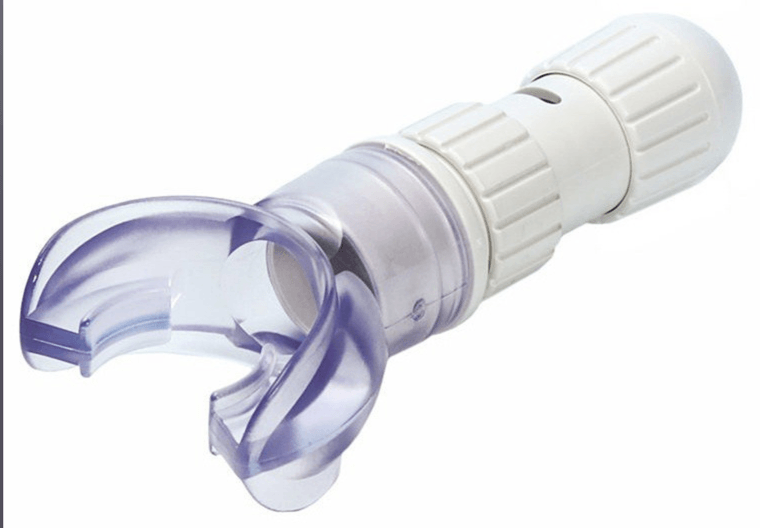 |
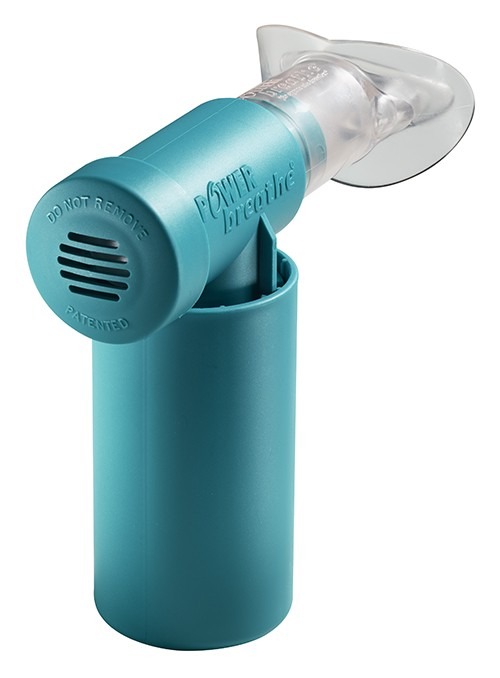 |
 |
| UltraBreathe | PowerBreathe | RespiBelt |
Besides the mechanical devices above, there are a whole host of breathing exercises that can help strengthen your breathing. Many of the exercises are for asthma or COPD sufferers, but are great for general strengthening as well. Pilates, in particular, has some great exercises to help with breathing such as:
-
- The Hundred
- The Swan
As simple Internet search will pull up examples of these and lots of other breathing exercises.
Nose Breathing
One way that we can add a bit of resistance to our breathing while running, and therefore strengthen things up a bit, is to use a technique known as nose breathing.
And yes, it really is as simple as it sounds. You literally close your mouth and breathe through your nose. But, as simple as it sounds, it can be challenging to do while running. You have have to slow your pace down a bit while you practice. You can build it into your training sessions like this:
-
- First 5 minutes and last 5 minutes of your sessions
-
- Build up from that: 10, 12, 15 minutes at the start and end of your sessions
- It will be uncomfortable, but will also force deeper breathing. Use Deep Belly Breathing.
Other Tips
One of the techniques that I use to calm my breathing down while running, is to use the tip of the tongue trigger. This has the added benefit of reducing your heart rate, so is great for recovering between intervals or when you’ve put a big effort in to get up a hill or fly past another runner.
The technique is very simple and involves you placing the tip of your tongue behind the top row of front teeth, about where the gum line is. Hold it there and you will notice both your breathing and heart rate start to reduce.

You can deepen the calming effect by anchoring it during meditation. For example, sit and relax for 5 to 15 minutes. Become very, very relaxed, and then activate the tip of the tongue trigger. Hold it for 10 to 20 seconds and release. Take some deep breaths and again become very relaxed. Activate the tip of the tongue trigger again for 10 to 20 seconds. Repeat once or twice more. You have now anchored a deeper sense of calm and relaxation to the trigger, so when you activate it when running (or at any other time), your mind and body knows it’s time to calm things down.
The great things about this is that you can calm down your heart rate and breathing while maintaining your running pace, or dropping it only slightly. Definitely one worth practicing!

Visualisation is also another fantastic technique to help regulate breathing. If you find you are reverting back to chest breathing, or your rate of breathing is too fast, see in your mind’s eye your lungs taking control and taking deeper breaths. Combine this with visualising your heart rate lowering and you can regain control quite quickly. Again, practice with this technique means that you can do this without altering your running pace too much.
The final tip I have from is recovering between intervals. I find that very slow jogging (even almost on the spot) helps to regulate my breathing much quicker than staying still or even walking. You don’t need to jog the entire recovery, just enough to get control of your breathing.
Well, that’s all for this post. I trust you found it useful – happy breathing!
Chris O’Brien
RunTeach Founder

